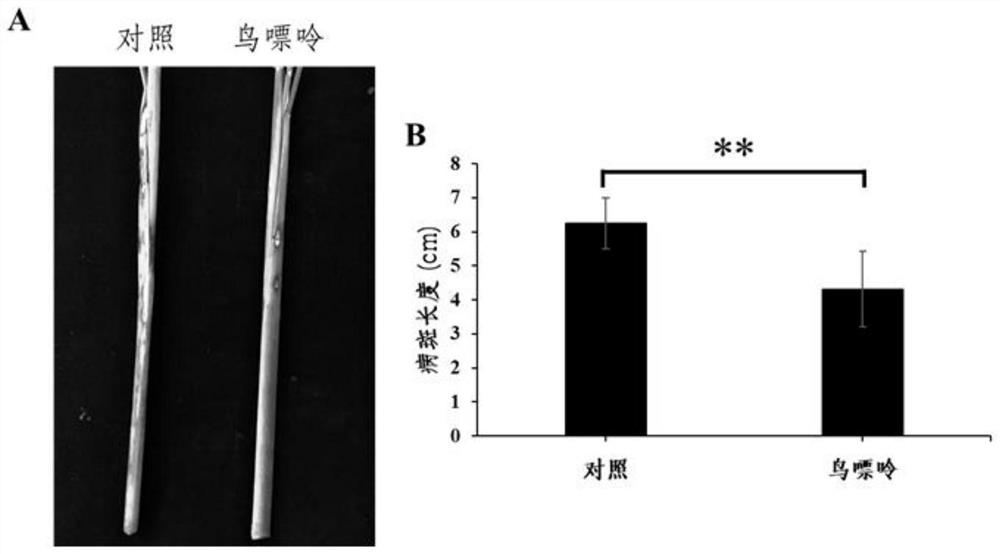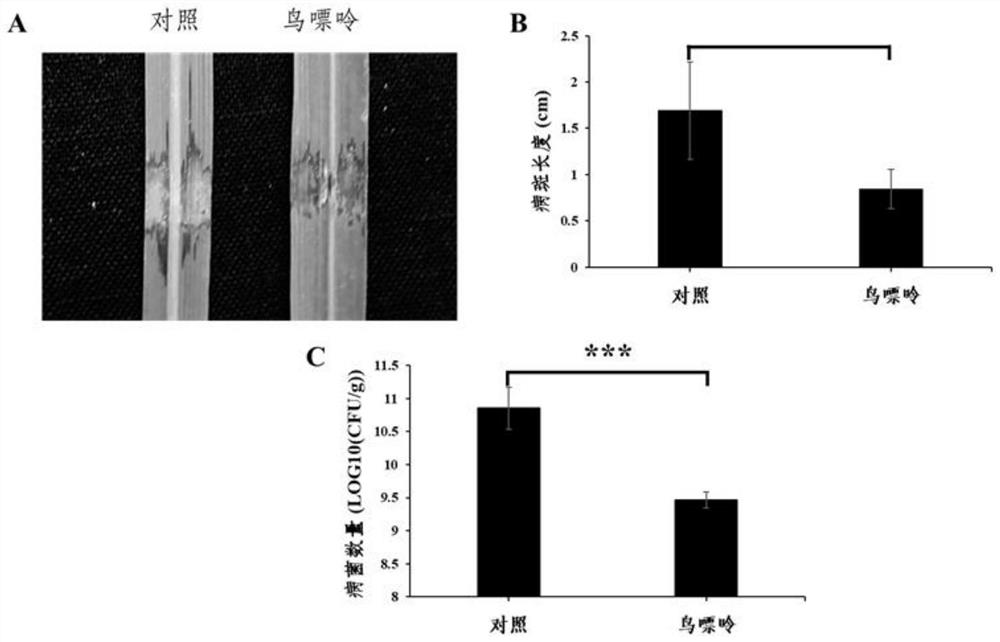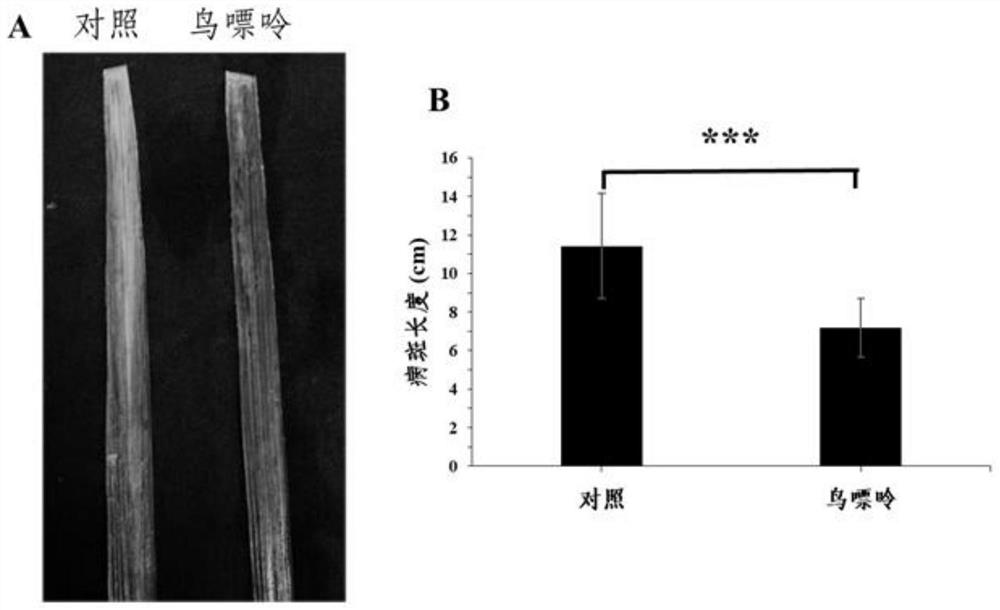A purine base plant immune inducer and its application
An immune inducer and plant technology, applied in plant growth regulators, plant growth regulators, applications, etc., can solve the problems of difficult prevention and control of plant diseases, lack of effective fungicides for oomycetes, etc.
- Summary
- Abstract
- Description
- Claims
- Application Information
AI Technical Summary
Problems solved by technology
Method used
Image
Examples
Embodiment 1
[0042] 1. Experimental crop: rice (japonica rice Zhonghua 11).
[0043] 2. Planting method: Rice is planted in a greenhouse with 16 hours of light and 8 hours of darkness alternately every day. The cultivation temperature is 26°C at room temperature and the air humidity is 60-70%. The greenhouse is located in the State Key Laboratory of Crop Biology, Shandong Agricultural University .
[0044] 3. Test method:
[0045] The plant immune inducer (containing guanine solution of 100ng / ml and 0.05% Silwet L-77) was sprayed on the paddy rice leaves and stems of 8 weeks of cultivation, and contained only 0.05% Silwet L-77 aqueous solution as a control. Two hours later, the cultured sheath blight bacteria wrapped the wooden matchstick, embedded the fungus-carrying wooden matchstick into the rice leaf sheath by the embedding method, and sealed it with a plastic wrap to keep it moist. After 4 days of inoculation, the diseased part of the rice was cut off and the phenotype of the disea...
Embodiment 2
[0050] 1. Experimental crop: rice (japonica rice Zhonghua 11).
[0051] 2. Planting method: Rice is planted in a greenhouse with 16 hours of light and 8 hours of darkness alternately every day. The cultivation temperature is 26°C at room temperature and the air humidity is 60-70%. The greenhouse is located in the State Key Laboratory of Crop Biology, Shandong Agricultural University .
[0052] 3. Experimental method:
[0053] When the paddy rice is cultivated to the 6th week, the plant immune inducer (guanine solution containing 100ng / ml and 0.05% Silwet L-77) is sprayed on the paddy rice blade, and with only containing 0.05% Silwet L-77 aqueous solution as a comparison. After 2 hours, with 10mM MgCl 2 The bacterial streak RS105 cultured on the plate was eluted, and the OD value was adjusted to 0.005, and the rice leaves were injected and inoculated with a sterilized medical syringe. After 10 days of inoculation, the diseased leaves were sampled and photographed, and the di...
Embodiment 3
[0057] 1. Experimental crop: rice (japonica rice Zhonghua 11).
[0058] 2. Planting method: Rice is planted in a greenhouse with 16 hours of light and 8 hours of darkness alternately every day. The cultivation temperature is 26°C at room temperature and the air humidity is 60-70%. The greenhouse is located in the State Key Laboratory of Crop Biology, Shandong Agricultural University .
[0059] 3. Test method:
[0060] Rice was sprayed with 0.05% Silwet L-77 aqueous solution (control) and 100ng / ml guanine (containing 0.05% Silwet L-77) after 2 hours, with 10mM MgCl 2 The bacteria strain PXO99A cultured on the plate was eluted, and the OD value of the solution was adjusted to 0.5, and the scissors with a frosted surface were dipped in the bacterial solution, and the rice leaf tip was sheared and inoculated. After 18 days of inoculation, the The diseased leaves were sampled and photographed, and the length of the lesion was measured.
[0061] 4. Test results:
[0062] image...
PUM
 Login to View More
Login to View More Abstract
Description
Claims
Application Information
 Login to View More
Login to View More - R&D
- Intellectual Property
- Life Sciences
- Materials
- Tech Scout
- Unparalleled Data Quality
- Higher Quality Content
- 60% Fewer Hallucinations
Browse by: Latest US Patents, China's latest patents, Technical Efficacy Thesaurus, Application Domain, Technology Topic, Popular Technical Reports.
© 2025 PatSnap. All rights reserved.Legal|Privacy policy|Modern Slavery Act Transparency Statement|Sitemap|About US| Contact US: help@patsnap.com



